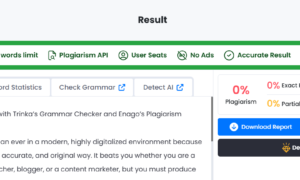Welcome to the world of connection, where brands and consumers harmonize on diverse platforms! In this fast-paced digital era, engaging with audiences in meaningful ways has become an art form for brands. From captivating social media campaigns to immersive storytelling through podcasts and videos, countless avenues exist for brands to establish profound relationships with consumers. Today, we explore the fascinating realm of brand-consumer connection and unveil the secrets behind successful brand engagement. Join us as we discover how different platforms serve as powerful tools for forging lasting bonds and learn how you can create your masterpiece by connecting with your audience!
Introduction
In a world saturated with marketing messages, brands face the challenge of breaking through the noise to connect with their target audience. However, by understanding how consumers engage with different platforms, brands can adopt a more holistic marketing approach, leading to more meaningful connections.
Numerous platforms offer unique strengths and weaknesses for brands to reach consumers. For instance, social media enables personal connections, but tracking return on investment (ROI) can be challenging. Conversely, traditional advertising may lack personalization but provides easier result measurement.
The key lies in comprehending how each platform operates and identifying the content that resonates best with your target audience. By creating engaging content that addresses consumer needs, you can build long-lasting relationships beyond the initial connection.
The Benefits of Connecting with Consumers Through Different Platforms
In an ever-evolving technological landscape, brands must keep up with the latest trends to remain relevant and engage with consumers effectively. Connecting with consumers through different platforms offers a range of benefits.
Firstly, it allows brands to reach a broader audience, connecting with potential customers who may not be familiar with their products or services. Additionally, it provides an opportunity to build relationships with customers and foster loyalty.
Another advantage of connecting with consumers through different platforms is the ability to collect data and receive feedback. This valuable information can be utilized to enhance the brand’s offerings, ensuring they meet customer needs. Furthermore, data collection assists brands in gaining a better understanding of their target audience and their preferences.
Ultimately, connecting with consumers through different platforms empowers brands to engage with potential and existing customers effectively. It enables reaching a wider audience, building relationships, gathering data, and improving offerings.
Different Platforms Used by Brands
Brands employ a variety of platforms to engage with consumers. While social media, websites, and emails are the most common, other platforms like print, television, and radio can also be utilized.
Social media is a widely adopted platform, enabling two-way communication between brands and consumers. It fosters relationships, facilitates information sharing, and encourages loyalty.
Websites serve as one-way communication platforms where brands share information with consumers. Websites provide product details, company news, and even coupons and discounts.
Email serves as another popular one-way communication platform where brands send messages to consumers. Emails can promote sales, introduce new products or services, or gather customer feedback through surveys.
Examples of Brands Effectively Using Different Platforms
Many brands skillfully connect with consumers through different platforms. Let’s explore some noteworthy examples:
Nike leverages social media platforms like Twitter and Instagram to connect with consumers. They also offer the Nike+ app, which allows consumers to track their fitness progress and receive personalized content.
Lululemon effectively utilizes social media platforms by sharing engaging content and hosting contests that encourage consumer interaction. They also have a strong presence on YouTube, where they publish workout videos and product demonstrations.
Apple employs multiple platforms to connect with consumers. Alongside social media, they maintain a website, an online store, and an Apple Store app. Furthermore, they organize events like the WWDC conference, facilitating direct interaction between developers, consumers, and the company.
Measuring Your Brand’s Engagement on Different Platforms
As a brand, it is crucial to understand how engagement varies across platforms and identify the most effective content. Measuring your brand’s engagement may be challenging, but it is essential to ensuring optimal connection with your audience.
Here are some tips on measuring your brand’s engagement on different platforms:
Social Media: Metrics like likes, comments, shares, and reach provide insights into social media engagement. Analyze content to identify what resonates best with your audience. Tools like Sprout Social or Hootsuite Insights can help track social media engagement.
Email: Monitor email open rates and click-through rates to gauge engagement. Are people opening your emails? Are they clicking on links? This information indicates whether your content resonates with your audience. A/B testing different subject lines or content types can help identify the most effective approach.
Blog: Use analytics tools like Google Analytics to track blog traffic. Identify articles with the highest views and shares, and analyze the content to determine what resonates with your audience. Tools like BuzzSumo enable tracking blog engagement across social media platforms.
Events: Track event attendance to assess engagement. Determine if people are attending and identify areas for improvement. Surveys or polls can provide valuable feedback on events and help pinpoint necessary changes.
By measuring your brand’s engagement on different platforms, you gain insights into audience preferences and can adapt your approach accordingly. This ensures delivering the right content most effectively to maximize engagement.
Conclusion
In today’s digital world, connecting with consumers through various platforms is vital for brands. By understanding how different audiences communicate on various platforms and leveraging those methods to create engaging content, brands can effectively reach and engage their target audience. Employing creative strategies such as influencer marketing, virtual events, and unique social media campaigns tailored to each platform’s capabilities and features, businesses have the potential to succeed in connecting with customers in a meaningful way.



































